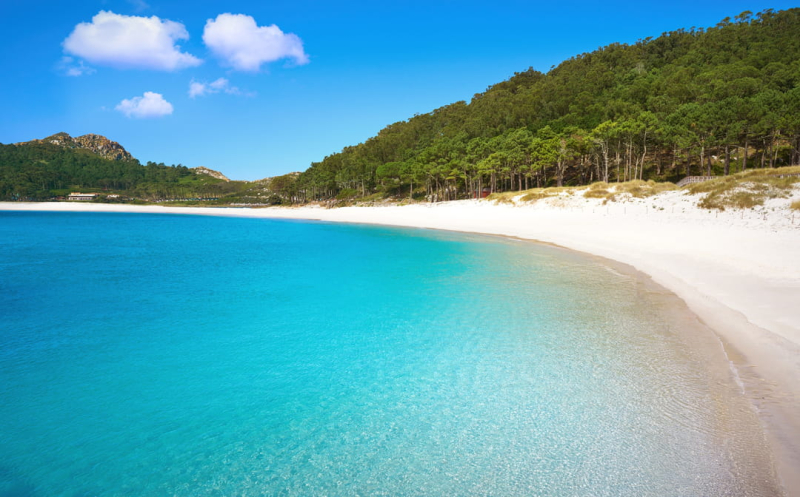Spain still has some secret paradises that are still unknown to foreign tourists: this is the case of this archipelago, where wild nature is preserved thanks to a drastic limitation of visitors.
Far from the crowded beaches of the Balearic Islands or the Costa Brava, there are hidden gems in Spain that locals love but that remain unknown to mass tourism. To enjoy one of these little paradises, you have to reserve your place on one of the ferries, the only authorized means of access.
Once there, a change of scenery is guaranteed: no cars or pets, but 4.5 km of unspoiled nature to explore on foot. The landscapes follow one another, between granite chaos sculpted by the elements, fragrant undergrowth of pines and eucalyptus, carpets of flowering broom and secret coves.
The ocean is never far away, with its intense blue reminiscent of Brittany and blending with the sky. Birds are also at home: cormorants, seagulls, gulls… Their colonies nest on the cliffs and their cries provide the sound atmosphere! To observe them, head to the Peito lighthouse north of Monteagudo, an ideal viewpoint for these protected species. A place outside of time, cut off from the world, where we become aware of the fragile beauty of nature when we leave it in peace.
200% Deposit Bonus up to €3,000 180% First Deposit Bonus up to $20,000
To preserve these exceptional places, the authorities have established strict attendance quotas. This is the case of the Cies archipelago, off the coast of Galicia, which only accepts 1,800 visitors per day in high season. The Cies are made up of three small uninhabited islands bathed by the Atlantic: Monteagudo to the north, Faro to the centre and the discreet San Martiño to the south.
Declared a natural park in 1980 and then incorporated into the Cies National Park Atlantic Islands of Galicia in 2001, they form a precious reserve of biodiversity. With its long beaches of fine sand and crystal clear waters, the archipelago has nothing to envy the Caribbean. The famous daily newspaper The Guardian even placed the Cies in its ranking to elect Rodas beach as the “most beautiful beach in the world”.
The Cies also shelter vestiges of a rich past which saw the Celts, the Romans and pirates succeed one another. To visit them, the ideal time remains spring with the first flowers or autumn. In all cases, you will need to book your ticket and obtain authorization from the national park. In summer, it is therefore better to do so well in advance because the 1,800 daily tickets go very quickly!

